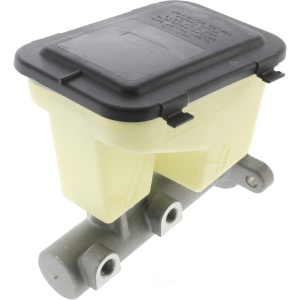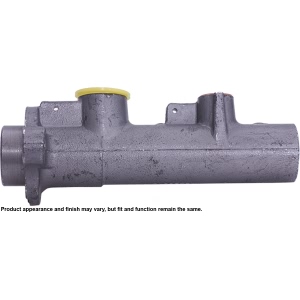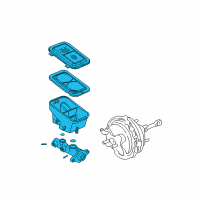< Back ×
2000 GMC Safari Brake Master Cylinder
My Vehicle Change Vehicle
2000 GMC Safari
< Back to View All
Brake Boosters & Brake Master Cylinders
- Department
- Series
- Brands
- Prices

 $132.53Product Specifications
$132.53Product Specifications- UPC: 805890009931
- Part Description: 2000 GMC Safari Premium Brake Master Cylinder
Vehicle Fitment- 2000 GMC Safari | All Trims | All Engines

 Product Specifications
Product Specifications- Notes: Supplied w/o Reservoir
- Bore Diameter (N): 1.25"
- E-Waste: No
- Installation Hardware Included: No
- Master Cylinder Color/Finish: Gray
- Master Cylinder Material: Aluminum
- Mounting Hole Quantity: 2
- Package Contents: Master Cylinder, Reservoir Pin Kit
- Port Quantity: 2
- Primary Port Size: 1/2 x 20
- Product Condition: Remanufactured
- Reservoir Included: No
- Secondary Port Size: 9/16 x 18
- UPC: 082617404884
- Part Description: 2000 GMC Safari Remanufactured Master Cylinder
Vehicle Fitment- 2000 GMC Safari | All Trims | All Engines
- Product Specifications
- Notes: 1996-05
- Other Names: Master Cylinder
- Item Dimensions: 8.4 x 6.1 x 12.1 inches
- Item Weight: 2.20 Pounds
- Fitment Type: Direct Replacement
- Replaces: 18029952
- Part Description: 2000 GMC Safari Cylinder Asm, Brake Master
Vehicle Fitment- 2000 GMC Safari | Base, SL, SLE, SLT, SLX | 6 Cyl 4.3 L GAS
FAQ for Brake Master Cylinder Repair
Q: What's the removal procedure for the master cylinder?
A:
The removal procedure is to apply the parking brake, disconnect the brake pipes, plug the pipes to prevent brake fluid loss or contamination, and remove the master cylinder nuts and the master cylinder.
By Bob
GM Specialist
01/11/2022Q: What's the filling procedure for the master cylinder reservoir?
A:
The removal procedure is to thoroughly clean the master cylinder reservoir cover before removal, remove the brake master cylinder cover and diaphragm and add brake fluid to fill the reservoir to the full mark.
By Bob
GM Specialist
01/11/2022Q: What should be noticed when disassembling the master cylinder overhaul?
A:
You mustn't hone the master cylinder bore. When the brake master cylinder is overhauled, it is recommended that the cylinder body be replaced rather than CLEANED UP by honing the bore. The master cylinder has a hard, highly polished BEARINGIZED surface, which is produced by diamond boring followed by ball or roller burnishing under heavy pressure. Honing will destroy this hard smooth surface and cause rapid wear to the rubber cups.
By Bob
GM Specialist
01/11/2022Q: What should be noticed when filling the master cylinder reservoir?
A:
When filling the master cylinder, you should use only Delco Supreme 11 (GM P/N 12377967) or equivalent DOT 3 brake fluid. You must not use a container that has been used for petroleum-based fluids, or a container that is wet with water. Petroleum-based fluids will cause swelling and distortion of rubber parts in the hydraulic brake system, and water will mix with brake fluid, lowering the boiling point. Keep all fluid containers capped to prevent contamination.
By Bob
GM Specialist
01/11/2022Q: What should be done if air pressure is used to remove the secondary piston?
A:
You will need to place the open end of the cylinder bore approximately 25 mm (1 inch) from a padded workbench or other surfaces to catch the piston when it comes out of the bore. You should apply low air pressure very carefully to ease the piston out of the bore. Never point the open end of the bore at anyone when applying air pressure. The piston may come out of the bore with considerable force and cause personal injury.
By Bob
GM Specialist
01/11/2022Q: Why should the bench bleed the master cylinder before installation on the vehicle?
A:
Bench bleed the master cylinder before installation on the vehicle. Bench bleeding removes air from the master cylinder. Bench bleeding reduces the time required to bleed the brake hydraulic system after installation.
By Bob
GM Specialist
01/11/2022Q: What are the bleeding procedures before installation on the vehicle?
A:
The procedure is to plug the outlet ports, mount the master cylinder in a vise with the front end slightly down, fill the master cylinder reservoir with clean brake fluid, stroke the primary piston about 25 mm (1 inch) several times using a smooth round-end tool, reposition the master cylinder in the vise with the front end tilted slightly up, then stroke the primary piston about 25 mm (1 inch) several times again, then reposition the master cylinder in the vise, loosen the plugs in the outlet ports one at a time, tighten the plug(s) before allowing the piston to return to its original position and fill the master cylinder reservoir with clean brake fluid.
By Bob
GM Specialist
01/11/2022Q: What's the installation procedure for the master cylinder?
A:
The installation procedure is to install the master cylinder and the master cylinder nuts then tighten the nuts to 36 Nm (27 ft. lbs.), loosely connect the brake pipes, tighten the pipe nuts to 30 Nm (22 ft. lbs.), and lastly bleed the brake system.
By Bob
GM Specialist
01/11/2022See more FAQs (3)

